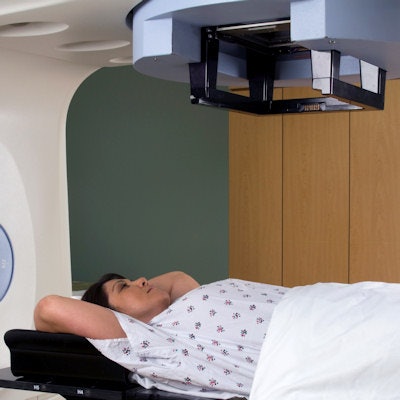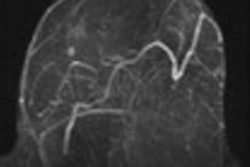
What happens to the heart when a breast cancer patient undergoes radiotherapy (RT)? The answer has been unclear, until now. Finnish researchers found radiotherapy induced regional changes corresponding to the RT fields.
In their prospective study presented at the European Society of Cardiology Congress (ESC 2016), Dr. Suvi Tuohinen, from Heart Hospital at Tampere University Hospital, and colleagues compared RT-induced changes in left- and right-sided breast cancer patients.
Patients with left-sided breast cancer experienced apical impact and global decline, whereas patients with right-sided breast cancer showed basal changes with apical sparing, they concluded.
RT and the breast
It is already established that radiotherapy in the thoracic region increases late cardiovascular morbidity and mortality, Tuohinen and colleagues wrote in their poster. However, the impact of the breast cancer laterality on cardiac function has been largely unknown.
The researchers set out to tackle this question by comparing 20 eligible patients with right-sided breast cancer and 60 patients with left-sided breast cancer before and immediately after RT. None of the patients received chemotherapy. Echocardiographic exams that included 3D measurements and ST segment elevation (STE) of the left ventricle were conducted.
| Before and after RT in left-sided breast cancer | ||
| Before RT | After RT | |
| Global longitudinal strain | -18.3 ± 3.1 dB | -17.2 ± 3.3 dB |
| Apical strain | -18.7 ± 5.3 dB | -16.7 ± 4.9 dB |
| Basal values | -21.6 ± 5 dB | -23.3 ± 4.9 dB |
Patients with right-sided breast cancer showed deterioration in basal anterior segments, the authors noted. Also, the decline in global longitudinal strain was associated with increased myocardial mass and aromatase inhibitor use.
In terms of left ventricular end-diastolic volume in the left breast, it dropped from 99 mL to 95 mL after RT. In the right breast, it increased from 97 mL to 98 mL. For left ventricular end-systolic volume in the left breast, it decreased from 40 mL to 39 mL. In the right, it increased from 39 mL to 41 mL.
Left ventricular end-diastolic mass increased in the left breast after RT (from 105 g to 108 g) and decreased in the right breast (from 106 g to 108 g).
The decline in the apical values was associated with several maximal RT values and delayed apical rotation. However, RT caused no significant changes in the conventional systolic or STE circumferential measurements, the researchers found.
Radiotherapy induced regional changes corresponding to the RT fields, and the changes were opposite in left- and right-sided breast cancers, the researchers concluded.




_20180817182650.png?auto=format%2Ccompress&fit=crop&h=167&q=70&w=250)














